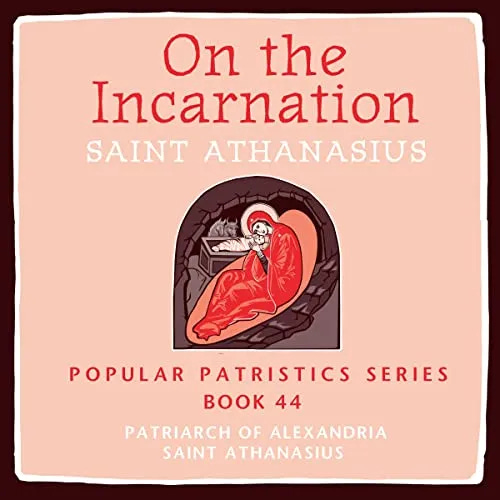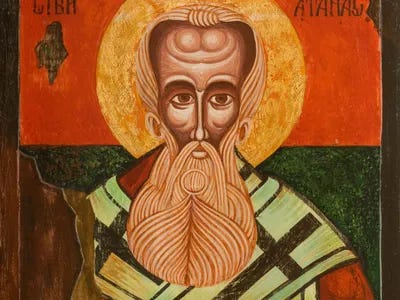Here is our recent discussion on sections 7-20 of St. Athanasius’s On the Incarnation. Click the tab above for the transcript of our conversation.
If you would like to join us for our final discussion this coming Monday night, here is the link.
When it comes to Christ’s cradle and cross, we typically use words like '“goodness” and “worthiness” in a very specific way.
In a very particular direction.
Jesus is the (only) one who is good.
Jesus alone is worthy of God’s love and vindicating resurrection, making Jesus the only one who is worthy of our worship.
We— it need not be added but frequently is— are manifestly NOT good. We are sinners. We’re worthy only of God’s wrath, deserving the punishment we God mete(s) out on Jesus.
As the popular CCM song puts it:
Thank you for the cross Lord
Thank you for the price You paid
Bearing all my sin and shame...
Thank you for the nail pierced hands
Washed me in Your cleansing flow
Now all I know Your forgiveness and embrace
Worthy is the Lamb...
We are not good.
Like Wayne and Garth before Alice Cooper, we’re not worthy.
This is the same acknowledgement most Catholics admit after they receive the host in the Mass:
O Lord, I am not worthy
That Thou should'st come to me,
But speak the words of comfort,
My spirit healed shall be.
We do not deserve the gift of salvation God offers to us in Christ.
That’s the very definition of grace, right?
Maybe.
Maybe not (exactly).
In On the Incarnation, Athanasius begins hinting at a theme that will recur throughout the work. Of the many names by which Athanasius will refer to God, the first one he employs is “Artificer.”
ar·tif·i·cer
ärˈtifəsər/
noun- archaic
a skilled craftsman, artist or inventor.
God
The image of God as Artist and humanity as God’s art governs Athanasius’s understanding of the whence and whither of the incarnation.
Having been made “very good” by this Artist, who made us for no other motivation but as an expression of his Goodness, humanity fell into disrepair. The Artist’s original intent has been sullied. His art has been defaced. The effect of sin and death upon the Artist’s art is not unlike the grime that obscures the frescoes on Medieval church walls.
Notice—
The problem for Athanasius isn’t guilt, which must be punished.
It’s corruption, which requires restoration.
So it’s not so much that you are a loathsome bastard who deserves the punishment Jesus, the only worthy one, bears for you, a la most CCM praise songs. Instead, for Athanasius, it’s more like you’re the Artificer’s exquisite art whose original beauty has been defaced and needs to be restored.
YOU are the Artificer’s exquisite art whose original beauty has been defaced and needs to be restored.
The art motif is not incidental in On the Incarnation for it provides Athanasius with the means to illustrate the logical consistency of the faith and its scriptural arc. In his treatment, what was once made by the Word and declared by the Word to be ‘very good’ remains good— if marred— because of the surpassing Goodness of the Artist.
Not only do we remain the Artist’s good creation, the Goodness of the Artist would be called into question if he allowed his art to languish without repair. No matter our appearance or condition, we remain precious art simply because of the Artist who made us.
Our provenance makes us worthy of reclamation.
And if the Artist abandoned his matchless art, left it to waste away, then we would rightly judge the Artist no longer worthy of his title.
O Lord, I am You would not [be] worthy
That If Thou should'st [not] come to me
The Mona Lisa, for example, remains a great painting even if today it retains a fraction of the original sheen DaVinci gave to it. Likewise, you’d never suggest that the Mona Lisa is undeserving of painstaking restoration. It’s too rare and precious a work of art. The Mona Lisa, in other words, is worthy of restoration. Indeed you’d likely argue that the art community was not worthy of the Mona Lisa if it turned its back on her and refused to restore her to her intended beauty.
Athanasius uses this image of God as the ultimate Artificer to turn our categories like “good” and “worthy” on their heads and, by doing so, Athanasius seeks to show how what God does in Christ isn’t a counter-intuitive surprise but is logically consistent with God’s very first creative impulse.
As he puts it:

















Share this post